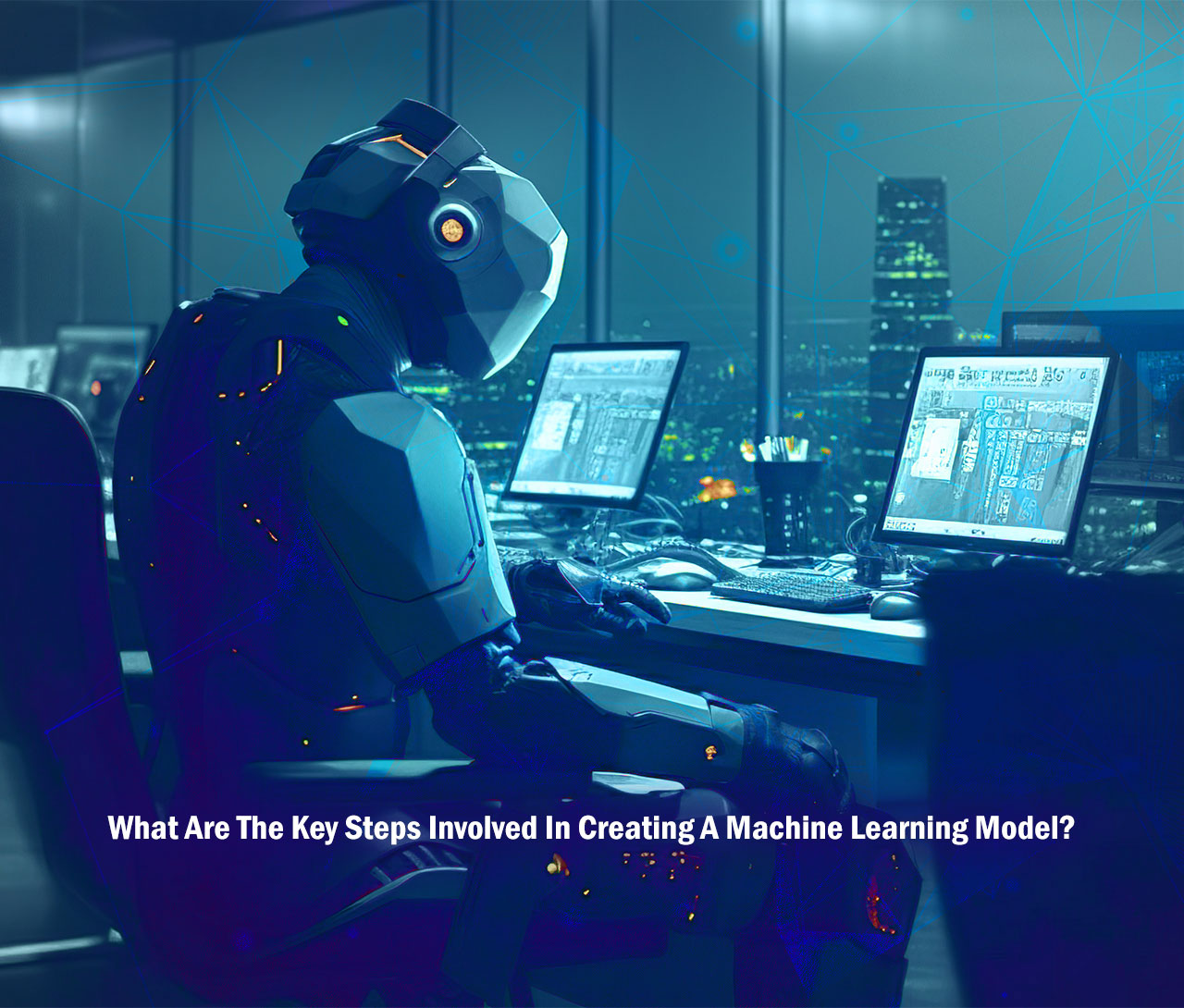Have you ever pondered what enables AI systems like ChatGPT or Gemini to consistently deliver accurate results whenever we interact with them? The answer lies in a crucial process known as model training.
Model training involves exposing a machine learning algorithm to vast amounts of data, allowing it to learn and adapt its internal parameters to minimize error or maximize performance. Let’s learn everything about it.
What Is Model Training?
Model training is a process in machine learning where a model is taught to make predictions or decisions based on data. During training, the model learns from a dataset by adjusting its internal parameters, such as weights and biases, to minimize a predefined measure of error or loss. This involves presenting the model with input data along with the correct outputs (in supervised learning) or allowing the model to find patterns and structures in the data (in unsupervised learning). Through an iterative optimization process, the model gradually improves its ability to generalize from the training data to make accurate predictions or decisions on new, unseen data.
Why Is Model Training Important?
Model training is a critical process in machine learning, central to the development and deployment of artificial intelligence (AI) models. It involves providing a machine learning algorithm with training data to learn and adjust. Several key aspects underscore the importance of model training:
- Iterative Process and Experimentation: Model training is iterative and experimental, requiring multiple rounds to fit optimal weights and biases to an algorithm. This involves updating input features and experimenting with different algorithms to minimize the loss function across predictions.
- Adapting to New Data: Retraining models with new data is vital to mitigate concept drift in production, ensuring continued relevance and accuracy over time. Automating this process within monitored production systems is crucial for sustained model performance.
- Data Science Development Lifecycle: At the core of the data science development lifecycle, model training involves fitting the best weights and biases to minimize the loss function. Different loss functions may be utilized based on project objectives, data type, and algorithm.
- Model Fitting and Precision: The iterative model fitting process is crucial for precision, identifying and learning optimal attribute values. Accuracy in training and validation datasets is pivotal for model precision.
- Performance Evaluation and Improvement: Model performance is evaluated with test data, with iteration occurring until performance meets or exceeds standards. Distinguishing between perceived and potential accuracy aids in assessing AI system performance and identifying areas for enhancement.
- Quality and Validation: Model performance dictates the quality of applications built upon it. Quality training data and algorithms are paramount during training, with data typically divided for training, validation, and testing purposes.
In essence, model training enables machine learning algorithms to learn, adapt, and continuously enhance performance. It is a vital step in AI model development, ensuring accuracy, relevance, and effectiveness in addressing real-world challenges.
What Are The Key Steps Involved In Creating A Machine Learning Model?
Creating a machine learning model entails a series of crucial steps aimed at enabling the model to discern patterns and make predictions based on input data. While the specific approach may vary depending on the nature of the problem and the chosen algorithm, here’s a general overview of how to go about building a machine-learning model:
- Define the Problem: Begin by clearly defining the problem to be addressed using machine learning techniques. Identify the problem type, whether it’s classification, regression, or clustering, and pinpoint the target variable.
- Gather and Prepare Data: Collect relevant data required for training the model. Ensure the data is clean, well-formatted, and accurately represents the problem at hand. Conduct data preprocessing tasks such as handling missing values, encoding categorical variables, and scaling numerical features.
- Split the Data: Divide the dataset into separate training and testing sets. The training set is utilized to train the model, while the testing set is used to assess its performance. It’s crucial to maintain a distinct dataset for testing to evaluate the model’s ability to generalize.
- Select an Algorithm: Choose a suitable machine learning algorithm based on the problem’s characteristics and data attributes. Popular algorithms include decision trees, support vector machines, neural networks, and random forests. Consider factors like interpretability, complexity, and performance requirements when making a selection.
- Train the Model: Feed the training data into the chosen algorithm and initiate the training process. The algorithm learns from the input data, adjusting its internal parameters to minimize error or maximize performance metrics. This involves determining the optimal weights and biases for accurate predictions.
- Evaluate the Model: Assess the trained model’s performance using the testing data. Calculate relevant evaluation metrics such as accuracy, precision, recall, or mean squared error, depending on the problem type. This step aids in gauging the model’s generalization capability and its adherence to desired performance criteria.
- Tune and Improve the Model: If the model’s performance falls short, fine-tune its hyperparameters or explore advanced techniques like ensemble learning or regularization. Iterate the training process by adjusting parameters, exploring different algorithms, or implementing feature engineering methods to enhance performance.
- Deploy and Monitor the Model: Upon satisfactory performance, deploy the model in a production environment. Continuously monitor its performance and periodically retrain it with fresh data to ensure ongoing accuracy and relevance.
Final Takeaway
Model training is a critical step in the development of machine learning models. It allows algorithms to learn from data, adapt to new information, and make accurate predictions. By defining the problem, gathering and preparing data, selecting an appropriate algorithm, training the model, evaluating its performance, and continuously refining it, we can create models that address real-world challenges and provide valuable insights.


